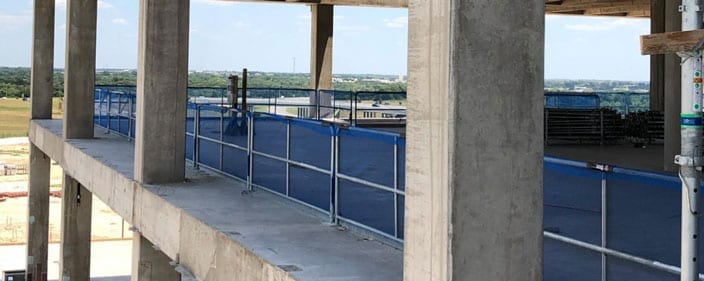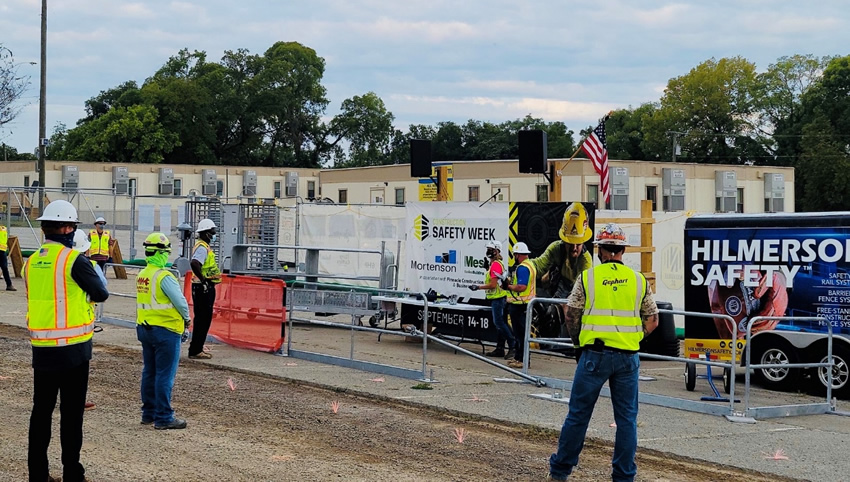Lean Safety is the all-important plank of the 6S System. What is 6S? As an equation: 6S = 5S + Safety. President & CEO of Hilmerson Safety, Debra Hilmerson, explains the direct correlation of eliminating the 8 Wastes with improved safety.
3 Ways to Lean into Jobsite Safety
I started in the industry over thirty years ago, setting precast concrete. Back then, construction safety was typically ignored as companies were more concerned about profits than worker safety. That never sat right with me, and it was not long before I switched to the General Contractor side of the business working my way through the ranks up to safety director.
I’ve always been a curious person by nature and, over time, became frustrated by the “if it isn’t broke don’t fix it” mentality of our business. Inspection after inspection, jobsite after jobsite, the same challenges plaguing project after project. Superintendents would often complain to me about safety equipment that was inadequate, cumbersome, and time-consuming to deal with. And even though the safety mindset and statistics have changed drastically over the past 15 years, leading many companies to take pride in their safe work practices and strive for zero incidents on job sites, the means and methods are still the same as they were many years ago. There are still dated equipment practices that have not changed.
I knew there were still countless improvements that could be made, and thought If I don’t give it a try, who will? Along my journey, I have learned that Lean and safety are interconnected, and today I’ll share three ways they support each other.
Elimination of waste = Lean Safety
If you know anything about the eight wastes—DOWNTIME (Defects, Overproduction, Waiting, Non-Utilized Talent, Transportation, Inventory, Motion, Excess)—you know these are all very common on the jobsite. What you may not know is that an increase in waste can lead to safety risk and exposure. If you work to eliminate these wastes, you will notice a direct correlation with improved safety.
For example, when I was a safety director, I would always write up superintendents for issues with wooden guard rails. Leading edge fall protection is crucial in our industry because falls are always near the top for cause of injury and death on jobsites sites. The problem with wooden guard rails is that they are dangerous, error prone, and take a lot of time to install, maintain, take down, transport, and store—touching on quite of few of the eight wastes. Working to eliminate this waste gave me the idea for the safety rails system that I built and patented. The rail system is safer (insofar as no nails or screws are used, which often presents a cut or impalement hazard), less time is spent at a leading edge, and it deploys in minutes instead of hours, while eliminating ongoing maintenance during the construction project.
Think about your jobsite: what opportunities can you find to reduce waste while improving worker safety?
Standardized work
A major focus of Lean is standardized work, or work that is repeatable. Standardized work can remove risks in a process, which will lead to reduction in injuries on a jobsite. When I was a safety director, I would often see injuries that occurred due to craftsman being inexperienced, rushing, or skipping steps and taking short cuts. Going back to the guardrail example, when I would talk with superintendents and equipment managers I would ask for their thoughts around making leading edge fall protection better. They would often reply, “Deb, figure out a way to get rid of these #!$@% 2x4s! Make it simple and easy to install.”
In studying the current state in our industry for leading edge fall protection, it’s easy to see that the work was not standardized. For starters, lumber presents a greater risk of defect due to variability in grade quality and deterioration from exposure to the elements. Another variability is the skill level of the craftsman you have who are building the wood railing system. Also, excess material is common with a wood system, due to buying too much material or the waste associated with cutting the lumber. Finally, the nailing/screwing of the lumber leads to variability with the risk associated with protruding nails and screws. With the metal guard rail system that I created, work is very simple to standardize. The railing is consistent, uniform, and rolls out to the location where it needs to be installed. It does not require nails or screws to install, nor the need for a skilled carpenter.
I am sure there are hundreds of similar opportunities on the jobsite to take out the variation of work being put into place; it is up to our field leaders to be looking for the opportunities to do so.
Respect for People
Respect for people is a core principal in Lean Construction and an essential component of a safety culture. As a superintendent, your primary responsibility is doing everything you can to make sure that workers on your jobsite experience no harm. To truly show respect on the jobsite, workers must feel like they are engaged and empowered as experts who put the work in place. The best way to show that respect is by empowering the field to make the necessary changes to improve efficiency and jobsite safety.
In my career as safety director, I liked to ask the trades for their ideas around making projects safer and more efficient. I would often hear them talk about plugging into outlets where live wires were exposed, so I tried to find a solution, and eventually I got the idea to make a “current cover” product for live outlets on construction projects. The cover protects workers in the live outlet area so they can do their job without the risk of an accidental touch.
Ideas like this come when the field is empowered to ask the right questions and truly listen and respect the craftsman doing the work. Think about how you show respect to the field on your projects and look for ways to empower craftsman on your jobsite.
Our industry is always changing, but the need to work smarter and faster while working safer will remain a constant challenge for builders. But with a focus on safety through the lens of Lean Construction, we can remedy or mitigate some of these challenges and improve worker satisfaction in our industry.











